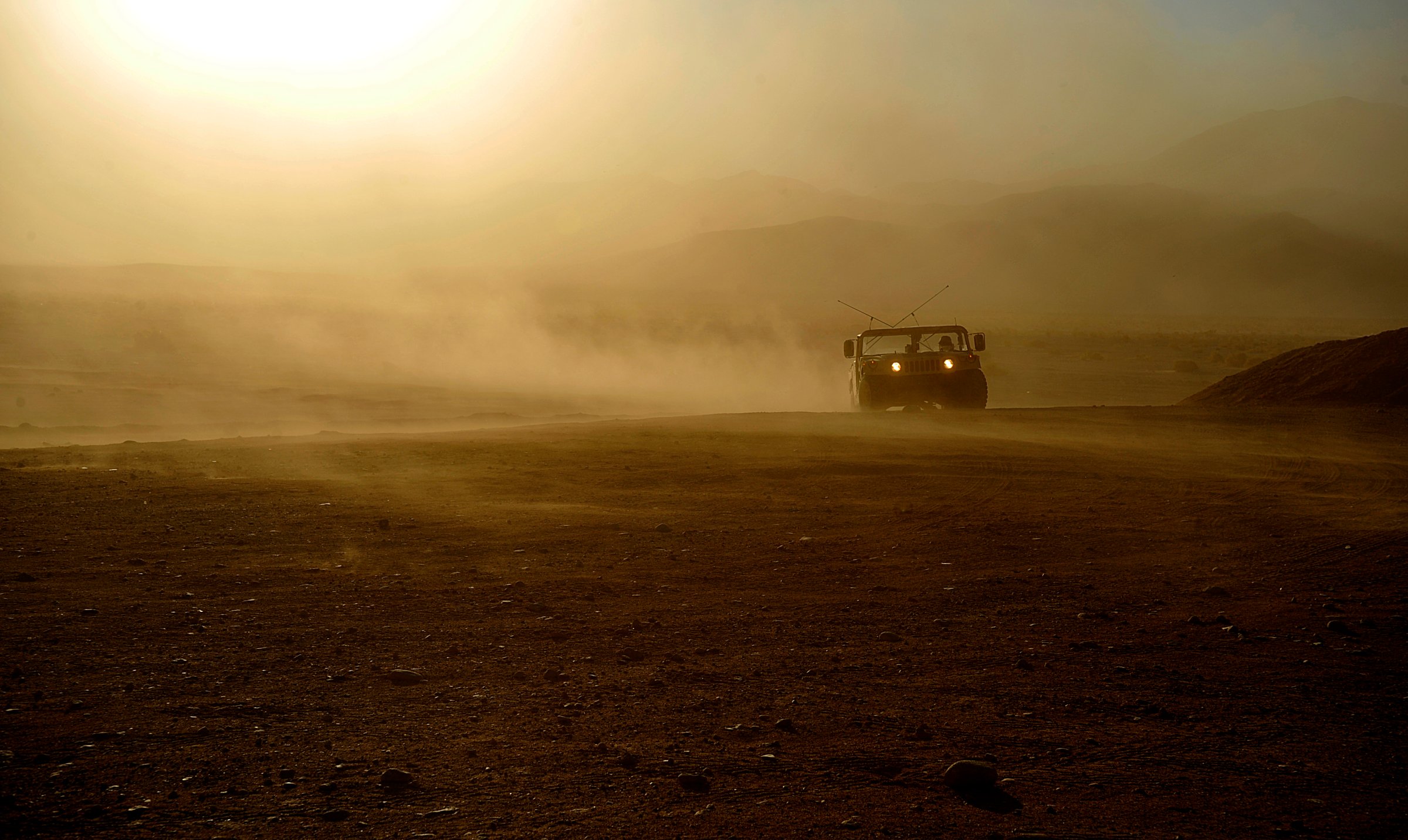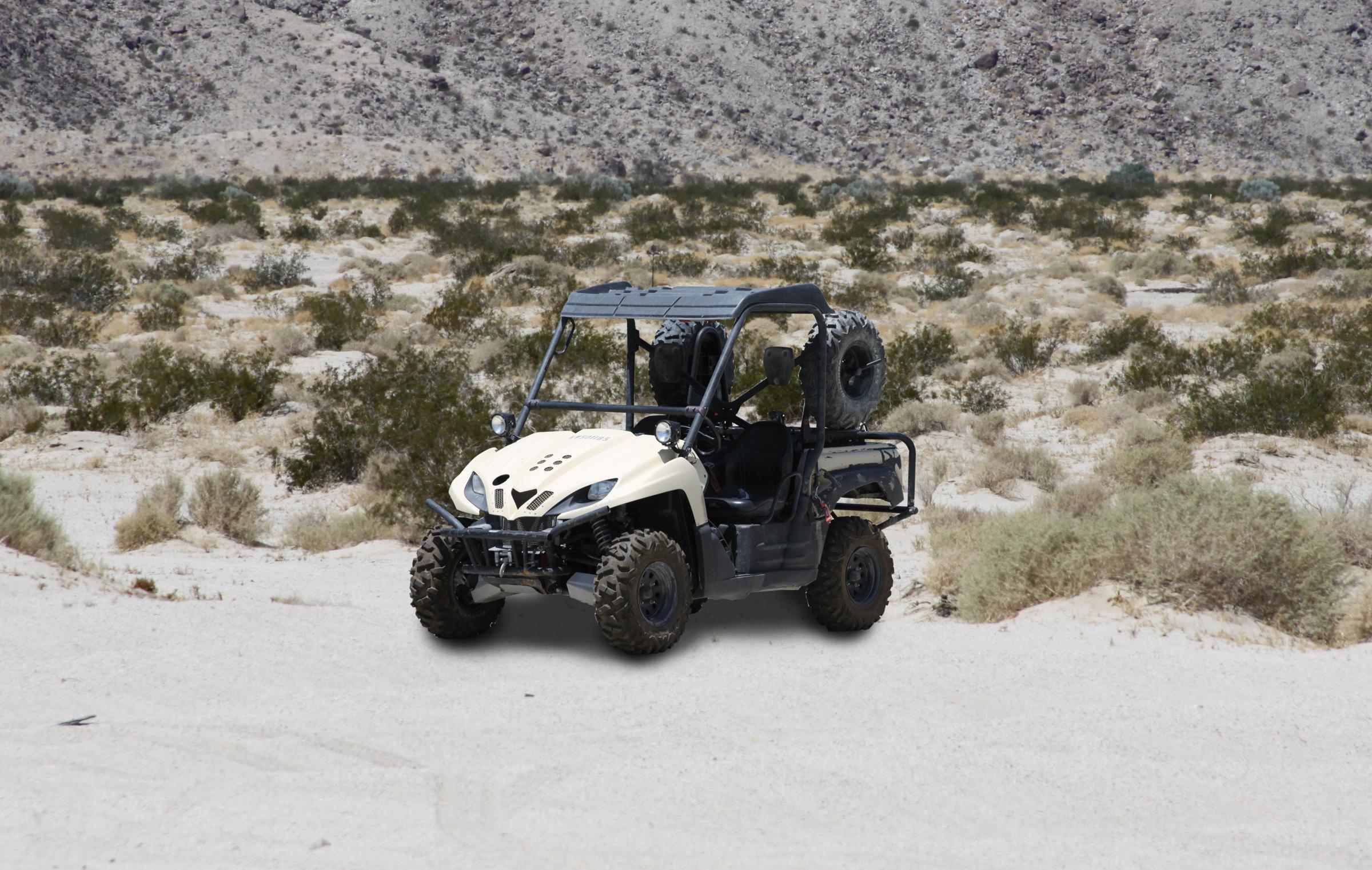
Navy SEALs are taught to swim, run and dive at their Coronado, Calif., training base, but they’re outsourcing driver’s education. The Navy Special Warfare Command is seeking an outfit to train future commandos to race across deserts and mountainous terrain in the SEALs’ fleet of off-road vehicles.
Obviously, this isn’t the driver’s ed you may have taken in high school, according to the contract solicitation the Navy posted Wednesday:
MEDEVAC procedures will be briefed by the on-site Navy Corpsman…In the event of a medical emergency, injury, and/or accident, the vendor shall stop training. At that point the Senior Uniformed Service Member shall have overall authority in the execution of the MEDEVAC plan.
Instead of the challenges of parallel parking and who has the right-of-way at an intersection, wannabe SEALs have different skills to master:
In response to operational requirements, Naval Special Warfare (NSW) operators must possess the intrinsic ability to perform mounted operations in a safe and effective manner across all terrain types and operating environments in high-risk Areas of Operation (AOs) worldwide. Due to austere forward operating locations and a high operational tempo, operators must be able to perform basic field diagnostics and repair on various ground mobility platforms to include: the Lightweight Tactical All-Terrain Vehicle (LTATV), High Center of Gravity Trucks (Hereafter named “Truck Training Platforms”), and the Ground Mobility Vehicle (GMV, also known as the HMMWV).
The winning bidder will train up to 12 SEALs in 10-day courses featuring at least two hours of classroom time, 12 hours of maintenance training, and 54 hours driving time. The SEALs want to have up to 14 courses annually, training as many as 168 drivers.
They’ll hone their skills within 250 miles of Coronado on “a minimum of 60,000 acres of drivable off-road terrain, to include sand, rocks, dirt, decomposed granite, and hills…the location of the operational training…should closely resemble the current and anticipated operational environments to include, but not limited to, unimproved surface/roads, and rugged off-road desert and high desert terrain.”
Specific skills desired:
—Controlled Emergency Skid Control
—Turning Drills to include Radius, Quick, Serpentine
—Evasive Steering Exercise
—Crash Avoidance
—Constant Acceleration
—Decreasing Radius Curves
—Reversing Drills
—Rapid Acceleration/Deceleration
—Vehicle recovery techniques including but not limited to: winching, kinetic rope recovery and towing
Instructors will teach SEALs “increasingly difficult terrain negotiation and operating skills” and “provide verbal guidance and explanation at new and/or difficult terrain features on each platform.”
Unlike your driver’s ed, it won’t be your phys-ed teacher earning extra bucks training the SEALs. Instead, they’ll rely on instructors who have already spent three years teaching Special Operations Forces off-road driving. Such skills are perishable “and training must continuously evolve and be refined in order to stay current with the battlefield threat level, and anticipated platform employment and locations.”

For James Bond-like skills, one instructor will be required to be certified by the Motorcycle Mechanics Institute and have “10 years of off-road mechanics experience as a member of a desert-racing crew participating in sanctioned racing events.” A second must have “a minimum of 10 years of off-road desert racing experience as a driver or co-driver/navigator in sanctioned racing events (i.e. Baja racing with vehicles like buggies, trophy truck, stock truck, pro mini etc.).”
Such specific personnel are needed to “provide high-quality instruction to NSW personnel” (and often to provide post-military jobs to ex-SEALs whose background happens to meet such requirements).
The SEALs don’t want anyone watching their training, which will likely take place on federal Bureau of Land Management terrain. “BLM roads are open to the public and the contractor cannot legally prevent public access,” one potential bidder asks.
So what should they do?
That requirement is primarily aimed at keeping away “friends, acquaintances, press, etc.,” the Navy responds. But the contractor is “expected to intervene and prevent unauthorized individuals (`looky lews’) from lingering around training sites to the best of their ability.”
Best way to keep such pests at bay? Bidders should “select training sites that are not overly populated.”
More Must-Reads From TIME
- The 100 Most Influential People of 2024
- The Revolution of Yulia Navalnaya
- 6 Compliments That Land Every Time
- What's the Deal With the Bitcoin Halving?
- If You're Dating Right Now , You're Brave: Column
- The AI That Could Heal a Divided Internet
- Fallout Is a Brilliant Model for the Future of Video Game Adaptations
- Want Weekly Recs on What to Watch, Read, and More? Sign Up for Worth Your Time
Contact us at letters@time.com